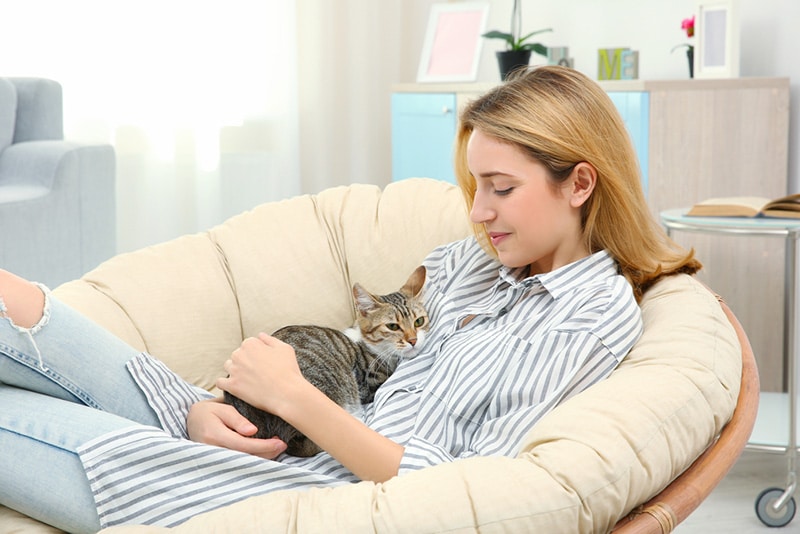Do you want to get your first pet but aren’t sure which one? Maybe you’re aware of the stereotypes placed on those labeled “dog people” or “cat people.” Possibly, you’re afraid some of those assumptions hit a little too close to home! You may be someone who feels like they love cats and dogs equally but actually lean one way or the other. Maybe deep down, you are a cat person!
Here are 13 signs that might mean that you’re a cat person.
Top 13 Signs You’re a Cat Person
1. You Talk to Every Cat You See
Does the sight of any cat set your heart aflutter? Do you go out of your way to chat up every kitty you come across, no matter their age, breed, or temperament? When you’re describing your latest vacation to your friends do you find you’re more enthusiastic about the cats you met than the sights you say?
For cat people, every feline is amazing, not just the ones who live in their house.
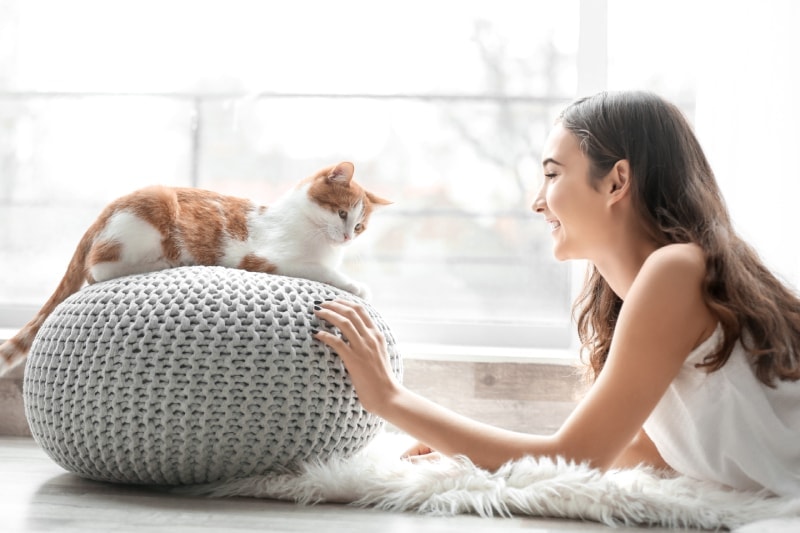
2. Your Cat Has More Furniture Than You Do
Take a look around your house. If you spot more cat shelves than bookshelves, you might just be a cat person. These days, you can find all kinds of stylish cat furniture to match any home décor possible. Cat people don’t mind parking a cat tree next to a mid-century modern sofa or hiding a litter box inside a rustic enclosure in the corner of the living room.
Cat people understand that the home is shared with their feline friends and make sure to cater to their needs as much as they do the human inhabitants.
3. Your Online Shopping Cart Is Full of Cat Gear
If your online shopping cart has more kitty accessories than human apparel, it’s safe to say you’re probably a cat person. From automatic litter boxes to gorgeous kitty collars and outfits to rival any found on the Paris fashion runways, cat people can quickly max out their credit cards shopping for their pets these days.
Young pet owners are driving a global explosion in spending on animals, with many buying for their cats as they would a human child.
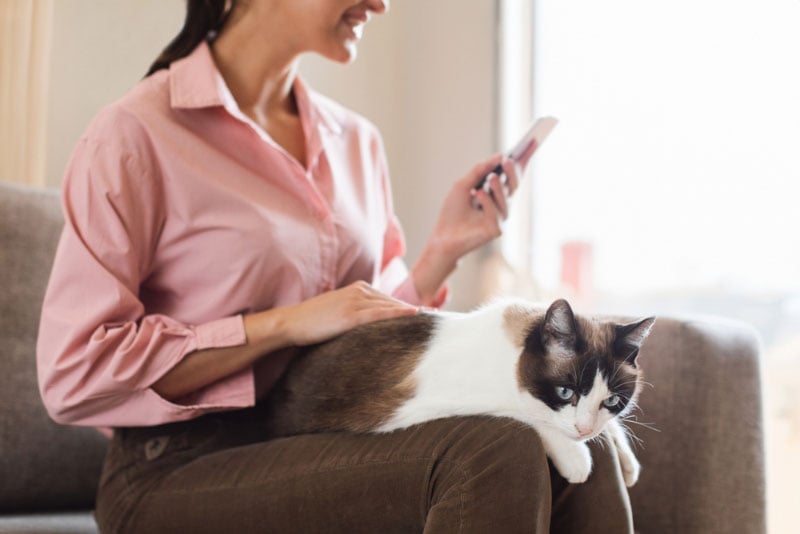
4. Your Social Media Feed Is All Cats, All the Time
The mysteries of social media algorithms may be a secret known only to the companies themselves, but if you’re a cat person, your Instagram feed probably gives you away. Most of us can appreciate the occasional funny or adorable kitten video but cat people are deep down the proverbial rabbit hole of cat content.
Do you follow more cat influencers than human ones? Or maybe you save nothing but cat-related pins to your Pinterest board? You’re probably a cat person.
5. You Prefer the Quiet
Any Siamese owner will tell you that cats can produce some seriously loud and persistent meows if they want to. However, even the loudest cat generally won’t be as noisy as a dog would be. If you prefer a calm, quiet environment at home, chances are that a cat will fit in better than a dog.
People who prefer to stay in and enjoy indoor activities rather than outdoor are more likely to be cat people as well. Like it or not, dogs need exercise and outdoor walks. If that doesn’t sound like any fun to you, you might be more of a cat person. Of course, no one said you couldn’t have both!
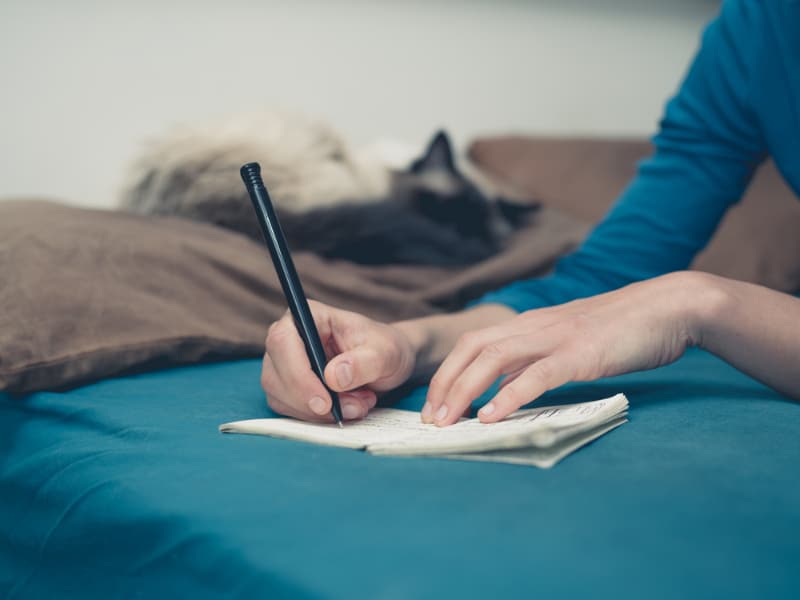
6. You Won’t Disturb Your Cat When They’re Napping in Your Lap: No Matter What
Ever heard people joke about how they can’t come to your party because their cat is asleep in their lap, and they can’t disturb them? For cat people, this isn’t a joke! No matter how uncomfortable a position it puts them in, a cat person will stay put until their snoozing kitty is ready to move.
If it means their legs fall asleep or they can’t move their arm for a while afterward, so be it. Dates, social engagements, appointments, and even getting to work will just have to wait.
7. At Parties, You’d Rather Hang Out With the Cat
Speaking of parties, what’s the first thing you do when you arrive at the gathering? Who do you find yourself spending most of your time with? If your friends go looking for you, is their first thought to find the family cat? Cat people will always find a resident feline to spend time with, no matter how well they might be hidden.
In many cases, they actually prefer to hang out with the cat rather than socialize with any humans!
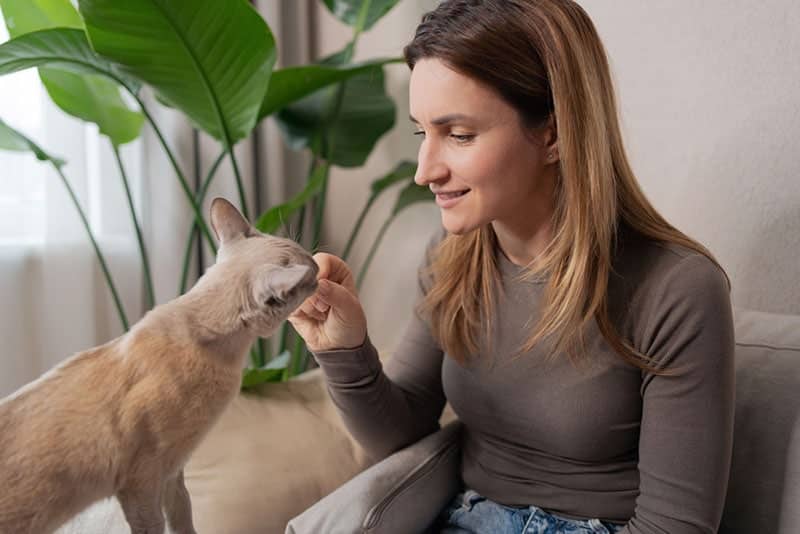
8. There’s Nothing Breakable Within Paw’s Reach
Cat furniture isn’t the only home décor choice that identifies you as a cat person. Another clue is the complete lack of breakable items on shelves or tables. Basically, anything that could be played with or broken is kept out of paw’s reach. Houseplants are either completely non-toxic to cats and easily replaceable or locked away behind closed doors.
You arrange your house to best suit your cat’s lifestyle rather than the other way around, and that’s what makes you a cat person.
9. You Don’t Even Notice the Cat Hair on Your Clothes Anymore
Unless you own a hairless cat breed, your pet will probably shed at least a little bit. Owners of certain long-haired breeds, such as the Maine Coon, might deal with near-constant shedding. For cat people, kitty hair on their clothing is just another accessory.
Yes, you probably go through multiple lint rollers a week (possibly even in a day,) but sometimes you don’t even bother trying. If you’ve reached the point of simply buying clothing that hides the hair, you’re definitely a cat person.
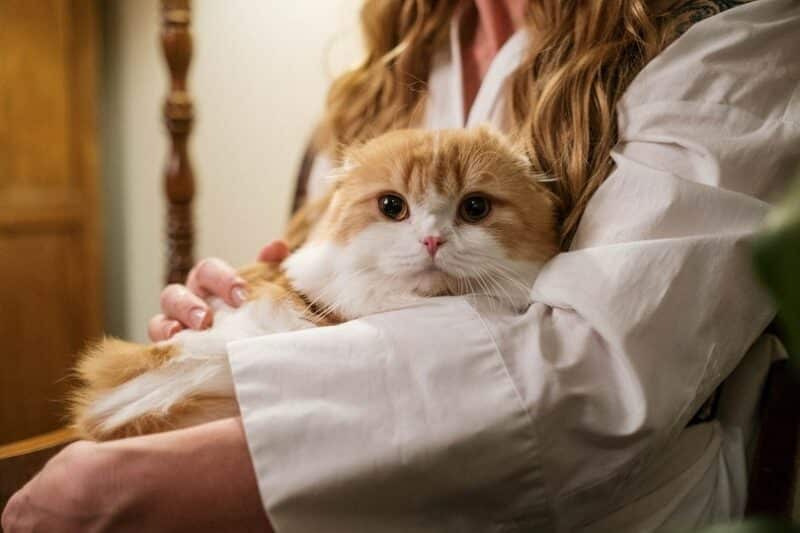
10. Your Cat Has Taken Over Your Phone
When it’s time to buy a new phone, is your most important consideration how much memory it contains to store endless cat photos? Is your phone wallpaper set on a rotating display of your most adorable kitty snapshots? Is your phone protected by a custom case featuring none other than your cat?
Cat people will never hesitate to show off photos of their kitty whether you ask to see them or not!
11. No One Has to Ask What Kind of Gifts to Give You
Buying gifts for people is hard, especially if you don’t know them that well. If no one has to ask you what you want or need and all your presents share a similar whiskered theme, you might be a cat person. Whether it’s gear for your cat or yet another kitty coffee mug, you’ll love and appreciate each new gift.
Your co-workers will love that they don’t have to think too hard if they draw your name for the yearly Secret Santa gift exchange too.
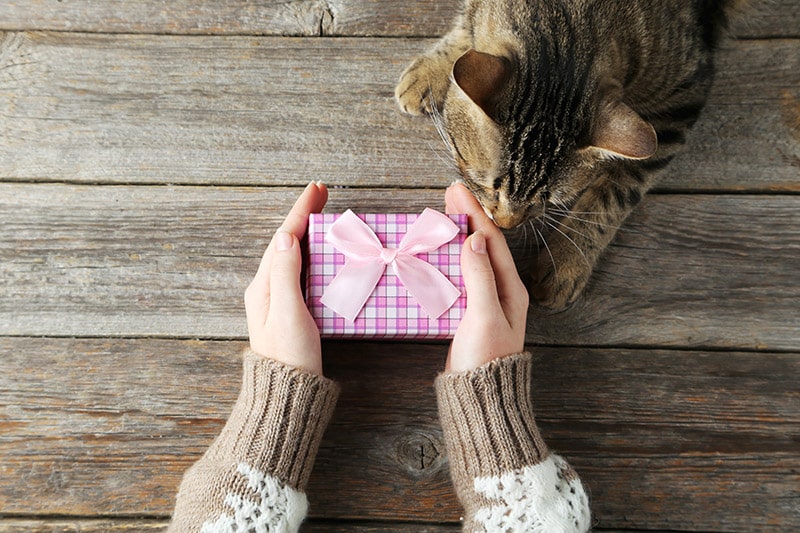
12. You Carry on Conversations With Your Cat
Many people talk to their pets, but cat people take these conversations to a whole different level. Frequently, they chat with their kitties as they would a human, filling them in on the details of their stressful workday or exciting first date. True cat people understand what their pet says to them in return, correctly interpreting cat body language such as the slow blink or waving tail tip.
And yes, they might even carry on the cat’s side of the conversation in human speech, too!
13. You’re Okay With the Less Pleasant Parts of (Cat) Parenthood
Like human parenthood, being a cat parent comes with its fair share of unpleasant moments. Whether it’s scooping a litter box twice a day, receiving a “gift” dead animal, or stepping on a freshly vomited hairball when you wake up in the morning, cat people take it all in stride.
Resigned yourself to early morning wake-up calls from a hungry kitty? Invested in a steam cleaner or even pulled up the carpet entirely? Surprised when guests comment that your house smells of cat poop because you just don’t notice anymore? You’re officially a cat person.
Conclusion
Now that you’ve read the signs you might be a cat person, you can decide for yourself how true it is in your case. Whether you’re confirming your choice to be a cat parent or choosing your first kitten, we hope this article was helpful to you.
Because of the persistent (and frequently inaccurate) negative associations, the truest sign that you’re a cat person might just be that you don’t mind being labeled as such!
Featured Image Credit: Africa Studio, Shutterstock
Contents
- Top 13 Signs You’re a Cat Person
- 1. You Talk to Every Cat You See
- 2. Your Cat Has More Furniture Than You Do
- 3. Your Online Shopping Cart Is Full of Cat Gear
- 4. Your Social Media Feed Is All Cats, All the Time
- 5. You Prefer the Quiet
- 6. You Won’t Disturb Your Cat When They’re Napping in Your Lap: No Matter What
- 7. At Parties, You’d Rather Hang Out With the Cat
- 8. There’s Nothing Breakable Within Paw’s Reach
- 9. You Don’t Even Notice the Cat Hair on Your Clothes Anymore
- 10. Your Cat Has Taken Over Your Phone
- 11. No One Has to Ask What Kind of Gifts to Give You
- 12. You Carry on Conversations With Your Cat
- 13. You’re Okay With the Less Pleasant Parts of (Cat) Parenthood
- Conclusion

